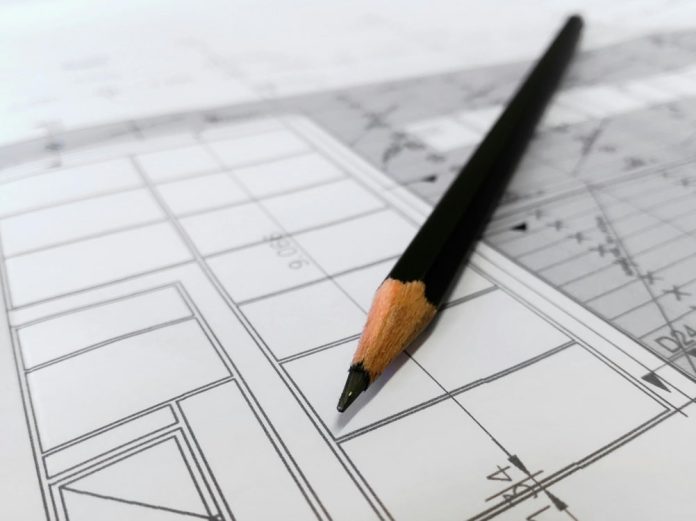A well-planned home balances both space and aesthetics, making everyday living more comfortable and visually appealing. Many homeowners struggle with limited square footage or awkward layouts, but smart solutions can transform even small areas into functional and stylish spaces. By incorporating strategic choices, you can create a home that feels open, organized, and uniquely suited to your lifestyle.
From optimizing layouts to integrating natural elements, there are many ways to enhance your home’s efficiency while maintaining its charm. This article explores expert-recommended strategies that maximize both space and style, helping you make the most of your living environment.
Open Floor Plans for Enhanced Flow
An open layout removes unnecessary walls between key areas, creating a seamless transition between spaces. This approach makes rooms feel larger by eliminating physical barriers that can disrupt the visual flow. Connecting the living room, kitchen, and dining area allows for better movement and encourages social interaction. Open spaces also improve lighting by letting natural light spread throughout the home, making interiors feel brighter and more inviting. Additionally, an open floor plan provides flexibility, allowing homeowners to rearrange furniture and adapt homes to different needs over time.
Personalized Designs
Your home should reflect your personal lifestyle and preferences. Custom layouts ensure that every square foot is used efficiently, catering to your daily activities and long-term needs. Whether you prefer an open-concept living area, private office space, or built-in storage, personalized layouts enhance both functionality and comfort. Homes designed with personal preferences in mind are often more enjoyable to live in, as they accommodate specific habits and requirements. Working with custom home architects like Ralston Architects ensures all your needs and preferences are addressed. By working closely with clients, these experts help create unique, thoughtful layouts that optimize space while maintaining a beautiful and cohesive aesthetic. Their approach ensures that homes are not only visually appealing but also practical, maximizing every inch to enhance comfort and usability.
Multi-Functional Furniture Solutions
Smart furniture choices can make a significant difference in maximizing space. Multi-functional pieces, such as extendable dining tables, sofa beds, and storage ottomans, serve multiple purposes without taking up extra room. These designs allow homeowners to create flexible areas that can adapt to different needs, whether it’s accommodating guests or storing household essentials. Investing in versatile furniture keeps interiors organized and clutter-free while maintaining a polished look.
Vertical Space Utilization
Using vertical space is an effective way to expand storage and improve organization. Tall bookshelves, wall-mounted cabinets, and hanging storage solutions keep items accessible while freeing up floor space. Lofted areas can also serve as additional living or storage area, especially in smaller homes. Taking advantage of vertical space helps create a sense of height and openness, making rooms feel more spacious without requiring a larger footprint.
Incorporation of Natural Light
Maximizing natural light enhances both space and ambiance. Large windows, skylights, and glass doors allow sunlight to brighten interiors, reducing the need for artificial lighting. A well-lit home feels more open and inviting, while natural light highlights textures and colors, adding warmth to the overall aesthetic. Thoughtful window placement and reflective surfaces, such as mirrors and light-colored walls, further enhance brightness and make rooms appear larger.
Minimalist Design Principles
A clutter-free home feels more open and inviting. Minimalist principles focus on keeping only what is necessary while ensuring everything has a purpose. Choosing simple furniture, neutral colors, and sleek surfaces creates a clean, modern look that enhances a room’s spaciousness. Avoiding excessive decorations and unnecessary furnishings prevents overcrowding and helps maintain a balanced, stylish atmosphere. Minimalism doesn’t mean sacrificing comfort; rather, it ensures that every piece in a home serves a function while maintaining an elegant and streamlined appearance.
Built-In Storage Solutions
Maximizing storage without compromising style is essential for an organized home. Built-in storage solutions, such as wall-mounted cabinets, recessed shelving, and under-stair drawers, make use of otherwise wasted space. These solutions help keep items neatly tucked away, reducing clutter and making rooms feel larger. Custom storage solutions allow homeowners to tailor their homes to their needs, whether it’s a hidden pantry in the kitchen, floor-to-ceiling wardrobes in bedrooms, or a built-in media unit in the living room. Well-designed storage keeps interiors functional and aesthetically pleasing.
Outdoor-Indoor Living Integration
Blurring the lines between indoor and outdoor spaces creates a seamless connection with nature while expanding living areas. Large sliding doors, retractable walls, and covered patios allow homeowners to extend their living spaces beyond the home’s interior. Outdoor seating areas, kitchens, and lounge areas enhance functionality while providing a relaxing environment. Bringing in elements such as potted plants, natural wood, and stone materials also reinforces a connection with the outdoors. This integration makes a home feel more expansive while enhancing its aesthetic appeal.
Use of Light Colors and Reflective Materials
Color choices and materials play a significant role in making a home feel larger and more inviting. Lighter shades, such as white, beige, and soft pastels, create an airy and open environment. Reflective surfaces, including mirrors, glass, and glossy finishes, help bounce light around the room, enhancing brightness and depth. Strategic placement of mirrors can also make a room appear wider or taller, creating an illusion of additional space. Using a cohesive color palette and avoiding dark, heavy elements ensures that interiors feel fresh and spacious.
Smart Home Technology Integration
Modern technology enhances both efficiency and convenience in a home. Smart lighting systems allow homeowners to adjust brightness and ambiance with ease, while automated window treatments optimize natural light. Space-saving solutions such as motorized storage compartments and fold-away furniture improve functionality without adding bulk. Voice-activated controls and smart appliances further streamline daily activities, making homes more adaptable and user-friendly. By integrating technology thoughtfully, homeowners can create a space that is not only stylish but also highly functional.
Maximizing space and style requires a combination of thoughtful planning and creative solutions. By incorporating open layouts, efficient storage, natural light, and smart technology, homeowners can create interiors that feel both spacious and visually appealing. Every element, from furniture choices to color selection, contributes to a well-balanced and functional environment. Implementing these expert strategies ensures that homes remain both stylish and practical, meeting the needs of modern living while maintaining an elegant aesthetic.

